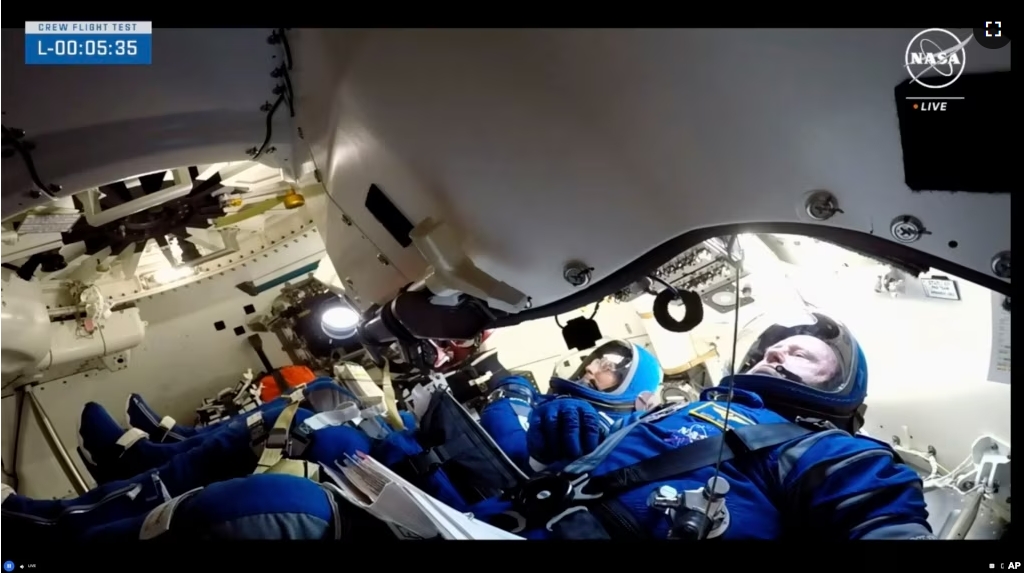Boeing launched astronauts into space with its delayed Starliner spacecraft for the first time Wednesday.
The launch marked the company’s entry into competition with SpaceX to provide service for the American space agency NASA.
NASA test pilots Butch Wilmore and Suni Williams lifted off in the Starliner spacecraft for the International Space Station (ISS) from Cape Canaveral in Florida. It was powered by an Atlas V rocket from the United Launch Alliance of Boeing and Lockheed Martin.
Boeing designed Starliner to fly without human assistance. But the astronauts can take control of the spacecraft if necessary. The test flight calls for Wilmore and Williams to take control of the vehicle on the way to the space station. The trip to the ISS is expected to last 25 hours, with arrival on Thursday. The two astronauts will spend just one week at the orbiting laboratory before heading back to Earth to land in the western United States on June 14.

Wilmore and Williams are former Navy pilots and long-time astronauts. The two have spent a combined 500 days in space over two ISS missions each. Both said repeatedly before the launch that they had full confidence in Boeing for this flight after so many delays.
The launch came two years after Starliner completed its first test flight to the ISS without astronauts on board. Last-minute problems had delayed the Starliner’s first two launch attempts with humans.
NASA halted a planned May 6 launch two hours before liftoff because of a problem with a rocket. Another attempt last Saturday was halted less than four minutes before liftoff because of a problem with a launchpad computer.
“I know it’s been a long road to get here,” NASA’s commercial crew program leader Steve Stich said before the weekend delay.
Boeing and SpaceX are both paid to carry NASA’s astronauts to and from the space station. The space agency wanted two competing U.S. companies after ending the space shuttle program.
In 2020, SpaceX became the first private business to launch astronauts into orbit. Only three countries, Russia, the U.S., and China have launched humans into space using their own systems. Since then, SpaceX has taken nine crews to the space station for NASA and three private groups for a Houston company.
If the Starliner mission goes well, NASA will use both SpaceX and Boeing for flights, beginning next year.
I’m Caty Weaver.
Hai Do wrote this story for VOA Learning English from Associated Press and Reuters sources.
_____________________________________________
Words in This Story
confidence –n. a feeling of being able to do something
on board –adj. to be on a vehicle such as a ship, airplane or spacecraft
commercial –adj. related to business activity carried out for a profit
